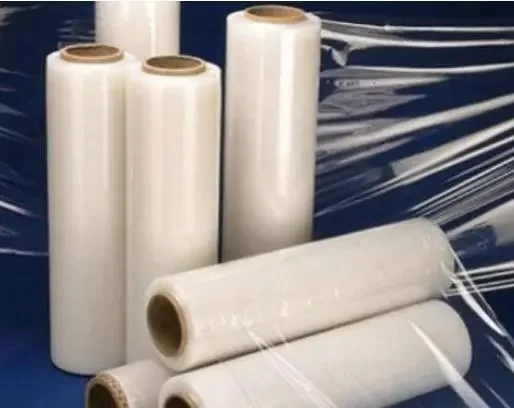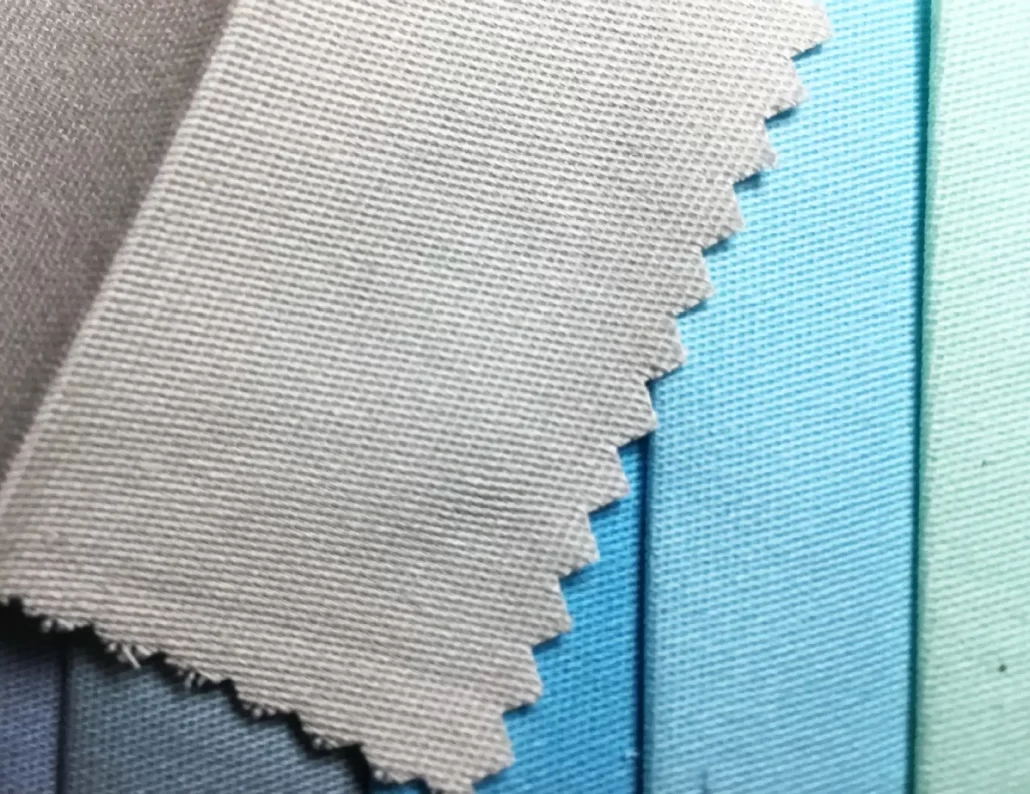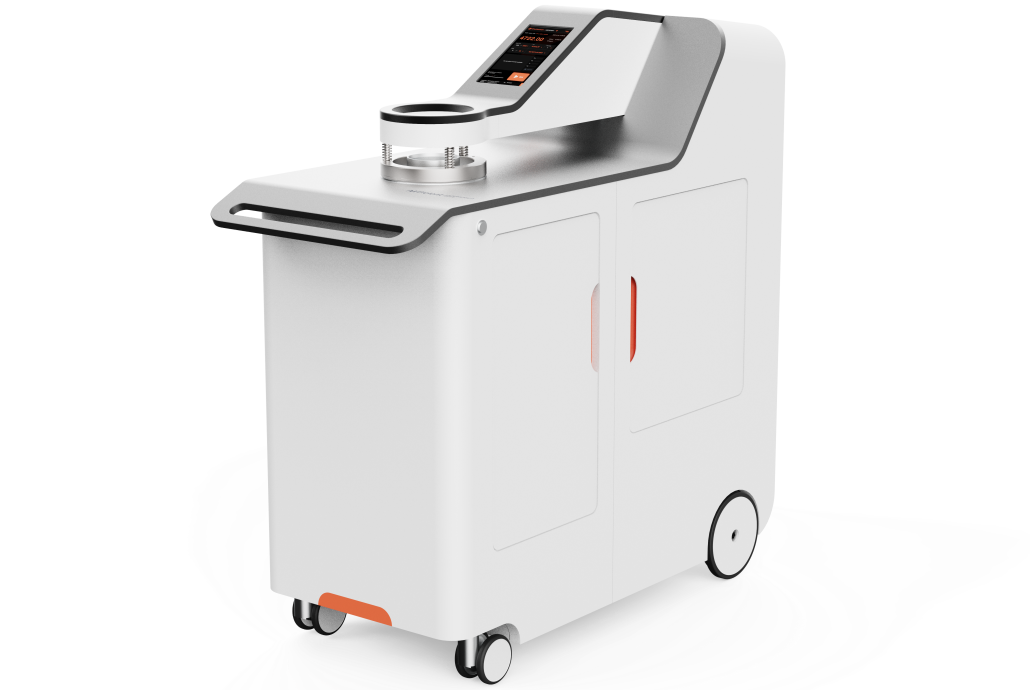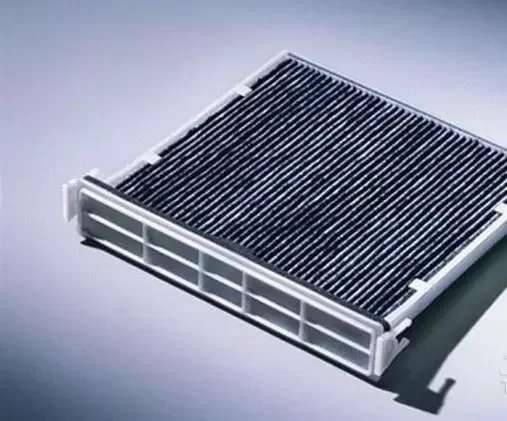What is the air permeability test for?
The air permeability tester measures how permeable materials are to air. It is mainly used to test inks, textiles, papers, plastics, and construction materials. The air permeability tester can accurately measure a material’s air permeability. It helps users select the right materials and improve product designs. Here is a detailed description of the main functions and uses of an air permeability tester.
1. The air permeability tester can test the air permeability of various materials. It can help companies select suitable materials in product development. The user can ensure the product’s quality by comparing the permeability of different materials. They can then choose the one with the best properties.
2. Quality control and inspection: Air permeability testers can test products for quality. Enterprises can use the air permeability tester to test the air flow of their materials and products. This ensures their quality meets the required standards. Air permeability testers can quickly detect changes in materials’ air permeability. They help companies prevent problems during production.
3. Improved competitiveness: The air permeability tester can compare materials. It gives firms the performance data of competitors’ products. Knowing the air permeability of similar products can help companies. They can then improve their designs and materials to be more competitive.
4. Air permeability testers can evaluate the air permeability of materials. This includes building materials and plastic films. They help in designing and selecting materials with better air permeability. Better air permeability materials can ventilate and aerate buildings. They reduce humidity and harmful gases. And they improve indoor and outdoor air quality. They also save energy and protect the environment.
5. Air permeability testers can help companies improve materials. They do this by testing and evaluating material permeability. The gas permeability tester helps firms understand a material’s gas permeability. It can identify issues with low gas permeability. Then, firms can improve product quality by changing the material or process.
In short, air permeability tester has a wide range of applications in many fields. It can help companies to test and compare permeability. They can then choose the right materials and improve product design. Gas permeability testers are vital for quality control, competitiveness, and saving energy. They also help protect the environment. As material science and production tech improve, firms will focus on permeability testers. They will boost innovation in various industries.
What does good air permeability for fabric mean?
The fabric’s good air permeability promotes air circulation. It helps regulate body temperature. And it keeps you comfortable, especially in heat or during exercise. It effectively discharges heat and prevents excessive sweating and discomfort.
Fabric air permeability refers to how gas molecules pass through it. It affects wearing comfort, including heat insulation, warmth, ventilation, and coolness. Good air permeability means the fabric lets air through. This is vital for keeping the body dry and comfortable. In hot weather, a permeable textile helps. It promotes the evaporation of sweat. This regulates body temperature and prevents discomfort from the heat. In addition, air permeability plays an important role in the health and comfort of the skin. Poor breathability in a textile prevents air circulation. It can create a humid, stuffy environment that may harbor bacteria and fungi. This can harm skin health.
Air permeability testing standards require measuring the airflow through a unit area of fabric over time at a set pressure difference. Newer testing tools reflect the growing demand for product quality and perception. Fabrics’ air permeability depends on many factors. These include fibre morphology, yarn structure, and fabric structure. It is also affected by the temperature and humidity. So, it’s vital to choose textiles with good air permeability. They can improve health and quality of life.
Why is high air permeability for fabric good?
The higher the air permeability of the fabric, the better. This is because air-permeable fabrics help sweat evaporate quickly. So, they keep the skin dry and comfortable. In hot summer months, people prefer clothes with good airflow. They disperse sweat to the environment. This avoids the discomfort of sweat retention.
Fabrics’ air permeability depends on several factors. They include the fabric’s structure, its fibre gaps, its organization, and its finishing. Non-woven fabrics usually have better air permeability. Their single-fibre, network-like structure causes this. Three things affect air permeability. They are: the gaps between the yarns, the number of fabric layers, and a specific finishing process. For example, fluffy, sparse, thin fabrics are more breathable. Tight, heavy fabrics, or ones with special coatings, are less so.
Also, air permeability depends on the wearer’s use and their face shape. If it does not fit the face well and there are gaps, air will flow through the paths of least resistance. The wearer may feel the air permeability is good. But, this will greatly reduce the mask’s protection. So, it is vital to choose protective gear that fits the human face closely.
In short, the more air-permeable the fabric, the better. It helps the body shed heat and sweat. This, in turn, improves comfort. Therefore, air permeability is an important consideration when choosing fabric products.
What are the factors affecting air permeability for fabric?
1. The effect of processing mode on air permeability
Compare the effects of different finishing methods on the air permeability of soft, cotton plain fabrics. Use these specifications: liquid ammonia soft, non-iron, liquid ammonia non-iron, liquid ammonia tide crosslinking, and three-proof finishing.
We compared how different finishing methods affect the air permeability of fabrics. Liquid ammonia finishing can improve the air permeability of fabrics. It can also moisture cross-link them. But, the air permeability of ordinary soft and non-iron finishing is poor. Liquid ammonia soft and non-iron fabrics are 20% more permeable than the corresponding soft and non-iron fabrics. The cotton fabric was finished with liquid ammonia, causing this. It thinned the fibre, creating a hollow, tube-like structure. This reduced the small, flat, band-like distortions. As a result, the fabric’s air permeability increased. Three-proof finishing makes fabric less breathable. It coats the surface with waterproof and oil-proof agents. They react with the fibers and form a film on the yarn’s surface. This prevents water and oil from entering the fibers. But, it also reduces the fabric’s air permeability.
2.The effect of washing times on air permeability
We investigated how washing affects the air permeability of the fabrics. We used the durable press washing procedure of the AATCC 135 method on different samples. The water temperature was 49 ±3℃. We washed for 10 min, dewatered for 4 min, and dried in a rotating cage.
Washing times had different effects on the air permeability of fabrics. But, they followed a similar pattern:
The air permeability changed most in the first 5 washes.
It changed less in 5-100 washes and tended to stabilize.
After 30 washes, it tended to increase slightly.
Washing times affect air permeability. This relates to the fabrics’ shrinkage rate. In the process, the fabrics stretch the yarn many times. This causes stress concentration. The fabric acted as water.
We have noted the user’s dislike of that rewrite. I will make different choices now.
The size, density, and tightness changed due to:
internal stress relaxation,
fibrous yarns, and
slow elastic deformation.
This reduced its permeability. In general, fabrics shrink the most after 5 washes. Then, the shrinkage levels off. So, air permeability will peak after 5 washes. With longer washing times, the fibre wears. The tissue loosens. The gaps between the yarns increase, and air permeability rises.
3.The influence of fabric structure on air permeability
Fabric tissue structure is also important. It affects the air permeability of fabrics. The air permeability of different fabrics varies with their structure. It is, in order of best to worst: perforated > satin > twill > plain. The plain fabric’s warp and weft are more interwoven. So, the yarns’ pore space is small. This reduces air permeability. The permeable fabric has larger yarn gaps, so it has better air flow. The increase in floating length changed the fabric’s structure and density. This also increased its permeability.
If the yarn count of the fabric stays the same, then:
And if the warp or weft density increases, the air permeability decreases.
If the fabric density stays the same and the yarn fineness decreases, the air permeability increases.
Within a certain range, the yarn twist increases, the weight per unit volume of yarn increases, the yarn diameter and fabric tightness decreases, and the air permeability of the fabric increases.
4. Influence of fabric material on air permeability
We tested the permeability of five fabrics. They were cotton, hemp, wool, nylon, and polyester. The fabrics had the same structure and thickness.
The test found that fabric material is a key factor in air permeability. In general, cotton, hemp, and wool are better than nylon and polyester. They are more permeable than synthetic fabrics.
How to improve air permeability test?
Air permeability testing has improved. It now has: better guidance on specimen prep, stricter checks on training reports, and a focus on fabric pilling and air permeability.
Some students may not take part in the experiments. Or, the specimens may not meet national cutting standards. This will affect the test’s accuracy. Thus, we must guide students on specimen preparation. It is vital to ensure the test samples meet the standards. Also, when students submit their practical training reports, we should enhance the checks. They should summarize the factors affecting the pilling and air permeability of fabrics. This will help understand the test results and find ways to improve. These measures can improve students’ skills and understanding. They will then be better at air permeability testing.
Also, the air permeability tester must not damage the test samples. They should be flat and free of scratches or perforations. Also, the test chamber’s temperature must be constant to reduce errors. The film must be fully dried. Its air permeability depends on the test’s temperature and humidity. These measures help to improve the accuracy and reliability of the test.
In summary, we can improve air permeability testing. We should:
Strengthen students’ experimental skills.
Improve specimen preparation.
Enhance checks on practical training reports.
Summarize the factors affecting air permeability.
Why do we do air permeability test?
We test fabrics for air permeability. This checks their comfort and function. It ensures the fabric fits specific use cases.
Air permeability is a key measure of a fabric’s comfort and function. Good fabric air permeability lets the skin get enough oxygen. It also reduces sweat on the skin, improving comfort. Therefore, the study of fabric air permeability has important theoretical and practical significance. Air permeability testing can show how breathable a fabric is. This affects its durability and performance. For summer, fabrics must breathe well. This keeps the wearer cool. Winter outerwear should block the wind. So, it must not breathe well.
In summary, air permeability testing is vital. It ensures fabrics meet the comfort and function of specific uses. The test evaluates fabric air permeability. It provides a basis for product design and improvement.
How to choose a air permeability tester?
When choosing a gas permeability tester, consider these key factors:
Various materials have different levels of air permeability, which requires testing. So, select the right test instrument for the material. Plastic films may require a specialized instrument to measure their permeability.
Test range: Different air permeability testers have different test ranges. Choose a model based on your needs. It involves the test’s accuracy and the air permeability limits it can measure.
Ease of operation: Choose an instrument that is simple to use and maintain. This includes the instrument’s interface and the ease of maintenance and calibration.
Stability: The instrument must not fail during use. So, choose a stable one. The reliability of the test results is related to the long-term use of the instrument.
Test index: We need to measure the permeability index to choose the right test instrument. For example, to measure the water or oxygen transmission rate, use a special tester for each.
Sample size and shape: Check if they match the test’s range and accuracy. Different testers may have different requirements for sample size and shape.
After-sales service: Choose a brand with good after-sales service. This will ensure you get timely support and maintenance if you have any issues.
In summary, consider the above factors when choosing a permeability tester. This will ensure the instrument meets the test requirements. It will provide accurate, reliable results.
What is a good score on the air permeability test?
A “good” air permeability score depends on the application and material. Different applications and industries have varying requirements for air permeability. Here are some general guidelines. They show what might be good air permeability in various contexts.
Textiles (Apparel and Technical Fabrics):
Breathable Fabrics (e.g., sportswear, outdoor clothing): 10-50 cm³/s/cm². Higher values may be desirable for increased breathability.
Windproof Fabrics: 0-10 cm³/s/cm². Lower values say better wind resistance.
Geotextiles:
General Purpose Geotextiles: 100-300 cm³/s/cm². Values within this range usually or show good drainage properties.
Filter Fabrics: 50-200 cm³/s/cm². The exact need depends on the specific filtration application.
Nonwoven Fabrics (e.g., medical textiles, hygiene products):
Medical Textiles: 10-100 cm³/s/cm². Lower values are often better for barriers. One may prefer higher values for breathability.
Hygiene Products (e.g., diapers): 100-300 cm³/s/cm². This range generally indicates a good balance between absorbency and breathability.
Building Materials (e.g., house wraps, insulation):
House Wraps: 5-60 cm³/s/cm². Lower values are better for water and air barriers. Higher values improve vapor permeability.
Insulation Materials: Variable. Specific requirements depend on the insulation type and intended use.
Filters (e.g., HVAC filters, industrial filters):
High-Efficiency Filters: 10-100 cm³/s/cm². Lower values typically indicate higher filtration efficiency.
General Purpose Filters: 100-500 cm³/s/cm². In cases where less strict filtration is necessary, higher values may be acceptable.
The ranges are approximate. The standards vary. They depend on the needs of different groups and industries. The best air permeability for an application depends on breathability, barriers, and strength. It’s based on the material’s intended use.
Which test methods does the textile Air Permeability Tester use?
Textile permeability testers use two main test methods. They are: the constant flow method for differential pressure, and the constant differential pressure method for flow.
First, clamp the specimen for the Constant Flow Differential Pressure Measurement Method. Then adjust the air flow to stabilize it at a constant rate, perpendicular to the specimen. Next, we test the pressure difference between the two sides of the specimen. We then calculate parameters, including the resistance to airflow. This method tests a fabric’s air permeability. It keeps the air flow constant and measures the pressure difference.
Active sentence: The Constant Differential Pressure Flow Measurement Method involves clamping a specimen.
Next, we adjust the pressure to create a constant differential on both sides. Next, we measure the air flow through a given area of the specimen. We do this vertically for a certain time. Then, we calculate parameters, like the fabric’s air permeability. This method tests a fabric’s air permeability. It keeps the pressure difference constant and measures the airflow rate.
Both methods test the air permeability of fabrics under different conditions. They simulate various environments, like wetting clothes from heavy perspiration during exercise. To conduct the testing, you must use specific temperature and humidity levels. This is to ensure accurate results. The air permeability test is key for textile comfort and performance. So, the textile air permeability tester is vital for product development and quality control.
Which standards do we use for air permeability testing?
The Air Permeability Tester for fabric utilizes the following standards:
ISO 9237 is the international standard for finding the air permeability of fabrics. It uses a constant airflow. It measures air permeability as the volume of air passing through a known area of fabric per unit of time.
ASTM D737 is the American Society for Testing and Materials standard. It tests the air permeability of textile fabrics. It measures the rate of airflow passing through the fabric. The airflow is passing through a known area.
DIN 53887 is a German standard. It determines the air permeability of textile fabrics using constant airflow. It’s like ISO 9237 and provides a measure of the air permeability in liters per square meter per second.
JIS L 1096 is a Japanese Industrial Standard (JIS). It measures the air permeability of woven and knitted fabrics. It measures the volume of air passing through a set area of the fabric. The test has specific conditions.
For more information on textile testing methods/standards
or textile testing machines, contact us:
What’s App: +86 180 2511 4082
Tel: +86 769 2329 4842
Fax: +86 769 2329 4860
Email: medium@chiuvention.com




